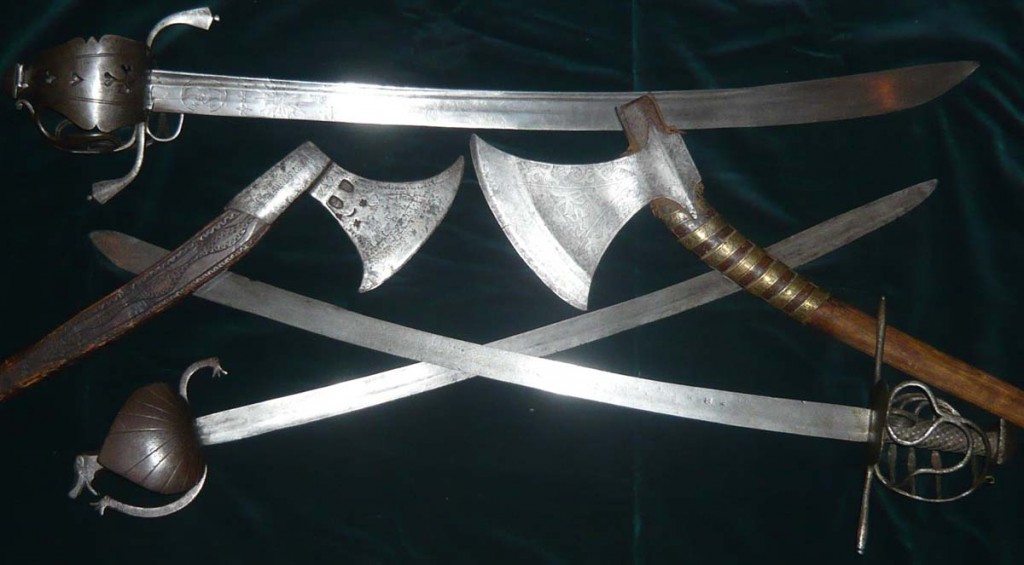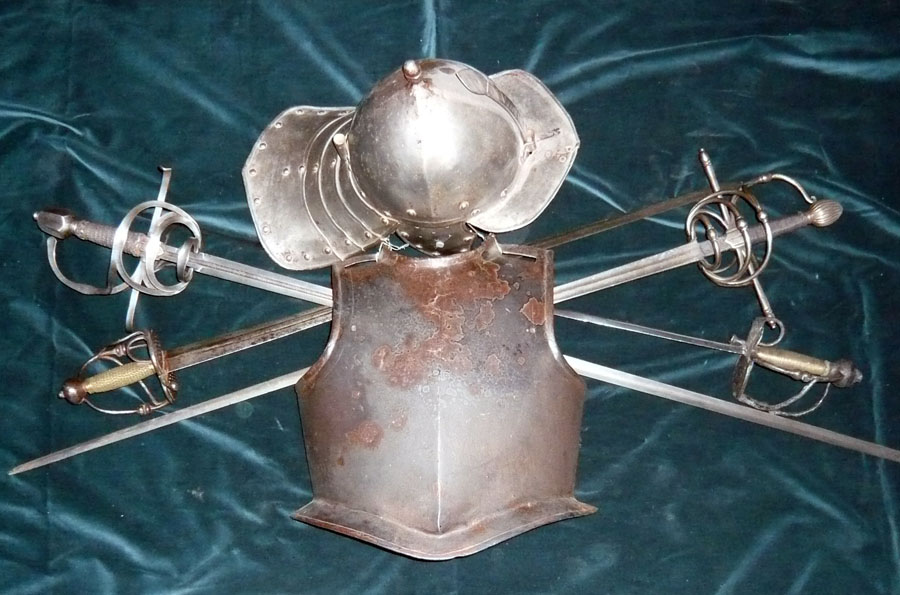Norwegian Swords pre 1700
Norway was important from the Viking age until the mid 1300′s, when the country was severely hit by the Black Plague. Norway then entered a “union by marriage” with Denmark – a “400 year night” with Norway in the back seat and Denmark doing all the drunk driving. Read more about the History of Norway.
Norway did not have any regular army at the time, but from the early 1600′s the farms should be be equipped with arms depending on their size and a number of farms should go together and supply the King with an armed soldier when needed – bondebevæpningen.
The most commonly spread weapon for this was the tessak. Most of them produced in Southeast Europe in the mid to late 1500′s and sold second hand to Norway in the early 1600′s. Most tessak’s are like the ones on the picture, but they are also found with a straight blades.
Many farms had the Norwegian battle axe with the angled handle, lances and sometimes even a musket. The angled handle made the axe cut in addition to chop. Many of the axes have beautiful workmanship. They are divided in to A, B & C axes. The one to the left, a C axe, were always engraved. The B axe was rather plain and the A axe with roots from the viking age usually was plain, but some were wonderfully engraved – the one to the right.
Denmark seemed to love going to war. They were evidently not very good at it and lost chunks of Norway to Sweden several times, but they did make some very nice weapons!
In the 1600’s weapons used in Norway were selected on a more random basis. The farmers had their weapons as described by law. The foot soldier could have a matchlock musket and a schwedendegen (the two lower swords on the picture to the left). The officer or nobleman the rapier etc. The breastplate on the picture has crude squares cut out for straps at the shoulders, most Norwegian used breastplates had these.
The two countries used more or less the same weapons in the 1700’s – that is, Denmark had a number of models that never were introduced in Norway as Norway usually got all the “old-fashioned crap”. As a result, Norway has a lot of great old stuff and the Danes today in some instances hardly even know about models that were in use in Denmark prior to 1790.
There is no intent from my side to make this a complete presentation of all or even of most models of Danish/Norwegian swords, but the plan is to gradually present a number of the more interesting or common ones and perhaps have a mini-presentation of most of the others.

